
Research conducted for the UX Upskill Program @ Hyper Island
This research was conducted and presented as part of the Field Work module at the UX Upskill Program at the school Hyper Island.
We were introduced to the art of doing field work in order to understand what people truly want, need and desire. Learned the fundamentals about how to gather data, what research methods there are and how we conduct interviews in the real world. Also, we practiced Nudging.
We also reviewed work processes and quality standards within UX Design and parts of UX research, such as user testing, data gathering and analytics as well as performing quantitative and qualitative field studies.
We were presented with the challenge: How might we help product teams when they are trying to understand their users?
We were to choose from three different target groups, Product Manager, Researched and Product/UX Designer.
I choose UX Designers as the target group within this research.
I used the Double Diamon Framework from Design Council (https://www.designcouncil.org.uk/news-opinion/what-framework-innovation-design-councils-evolved-double-diamond).
1 – Mapping out the UX Designers needs, I simulated a workshop where the needs (coming from my earlier experiences) was mapped out and where I selected 3/5, top important- and unknown, needs for a UX Designer to be used for the hypothesis.
2 – An experiment guide was used to create hypothesis out of the top 3 needs. The guide helped me to develop both the quantitative questions as well as the qualitative questions
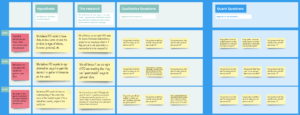
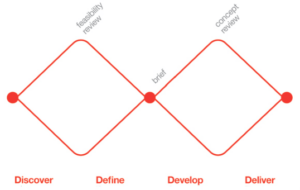
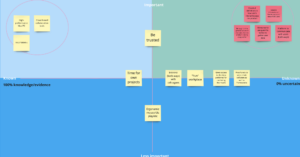
3 – The survey was set up in Google Forms. I decided from the beginning that I wanted something I find important in research, a large enough sample of the dataset. My preconceptions about UX Designers are that they are creative and that the like memes. So I created a survey that would give the user a “fun” and “relaxed” feeling when filled in. Since we also couldn’t reward the ones participating with gift cards or such, I brainstormed and came up with that a book tip was something I think most appreciate, but mostly, it triggers peoples curiousness!
I joined different Slack, Facebook and LinkedIn groups for UX designers and posted in them. I connected over LinkedIn with random UX Designers and asked them to fill it in. All of these acts worked to get me 110 answers on the survey and 9 people that was up for interviews!
Along with the answers coming in and me having the interviews I’ve learned that the survey, if redoing it, would benefit from being more clear on the exact type of UX Designers I was looking for as well as rewriting some of the questions for getting even more insights from it. Though a great learning opportunity and I’ve also recieved good and constructive feedback from people answering the survey and wanting to help out.
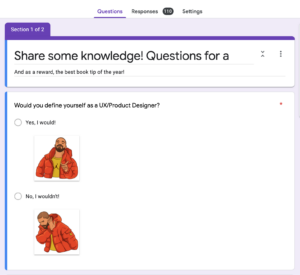
4 – For the last part the data from the quantitative survey data and qualitative data from the interviews was synthetized where the insights, principles and the next steps are defined.
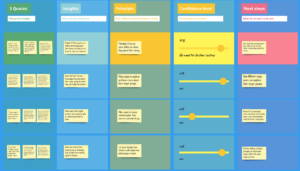
A Generative Research Project
THE CHALLENGE
How might we help product teams when they are trying to understand their users?

Methodology
Defining the Target Group
UX DESIGNER
Collecting the Quantitative Data
Survey
Conducting the Interviews [Qualitative Data]
Interviews
Synthesis the Data
Please see below for the results of this research.
Synthesis
See the results below
Hypothesis 1
We believe UX Designers prefer working with products for which they belong to the target group
Definition of Success
We know this is true when UX Designers express posivitely about being part of the target group or negatively about not being part of the target group
Results [Quantitative Survey]
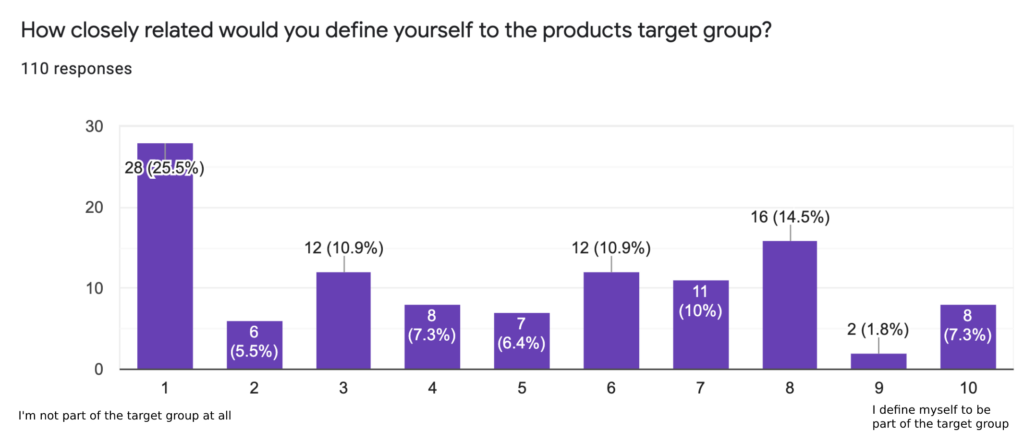
Results [Qualitative Interviews]
- UX Designers being part of the target group found it to be positive
- UX Designers who defines them being in the middle found that knowing more about the target group was positive
- UX Designers that weren't part of the target group found it was a struggle not to be it
Interview Quotes
Insights
UX Designers feel that the more knowledge they have about the products target group the better they can perform in designing the product
Principle
Allow UX Designers to explore and learn more about their target groups
Next step
Concept session: Explore how we can support our UX Designers in learning more and be closer to the products target group.
Hypothesis 2
We believe UX Designers would benefit to have a structured forum where users and the company can communicate with each other
Definition of Success
We know this is true when UX Designers can't refer to a unified place where they can access and share communication with their users
Results [Quantitative Survey]
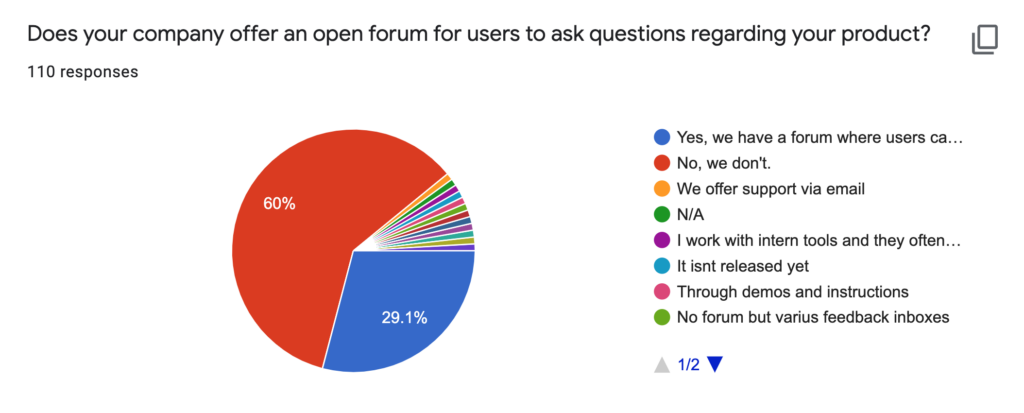
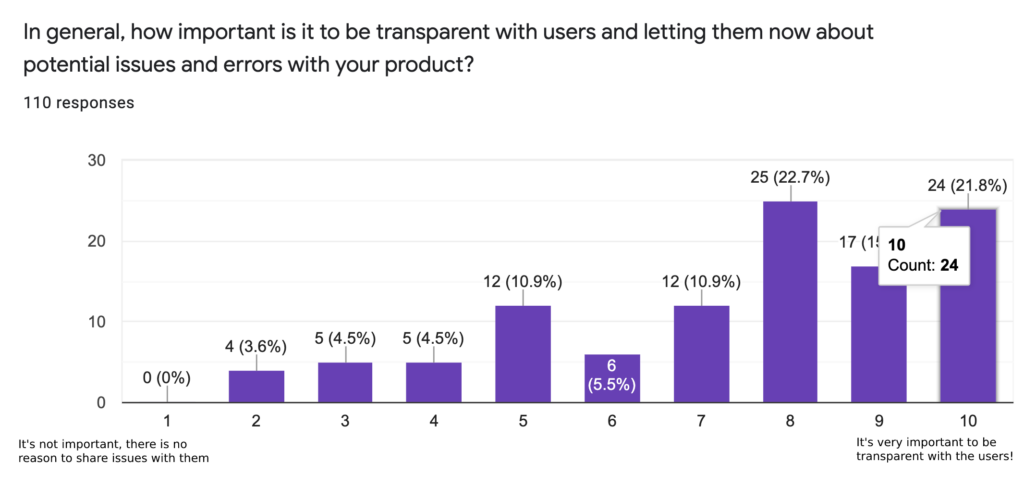
Results [Qualitative Interviews]
Interview Quotes
Insights
UX Designers are lacking a unified platform where users and the product company can communicate.
Principle
Allow UX Designers to receive communication from users in a structured way.
Next step
Set up and test a basic community driven web forum to see if it would benefit UX Designers when they understand their users.
Hypothesis 3
We don't believe UX Designers think that demographic data is important when understanding their target group
Definition of Success
We know this is true when UX Designers don't bring up demographics data during conversations about understanding their target group
Results [Quantitative Survey]
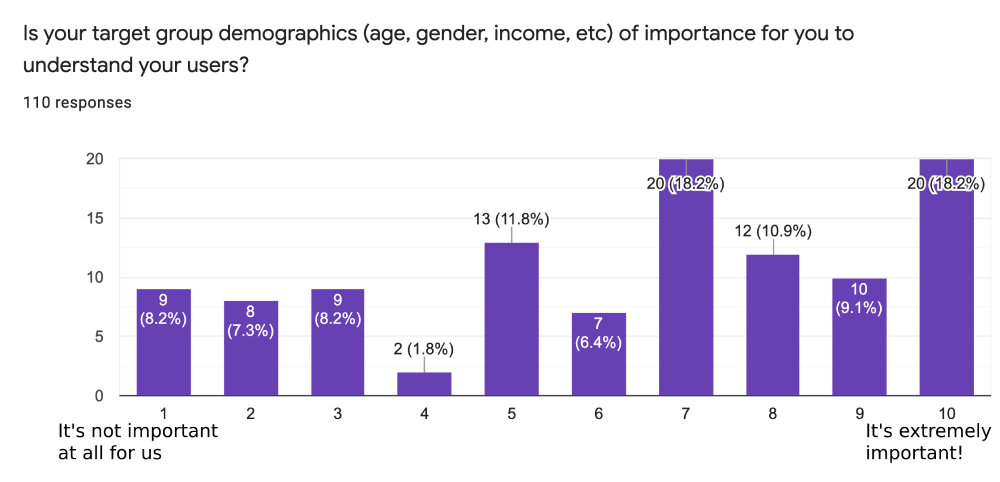
Results [Qualitative Interviews]
Though, it's important to include here that Google Analytics often was brought up in the interviews so a possible reason could be that Google Analytics have made it so easy to access demographics that UX Designers aren't even reflecting that it's not an option to know all about the demographics about your users.
Interview Quotes
Insights
UX Designers doesn't share a common viewpoint on the importance of demographics in understanding their target group.
Principle
Allow UX Designers to be open to both use demographics and not for understanding their target group.
Next step
Research to find out if demographics is of importance for different types of products or if it's that different UX Designers think it's important or not
What I've learned
Jump.
Thanks!